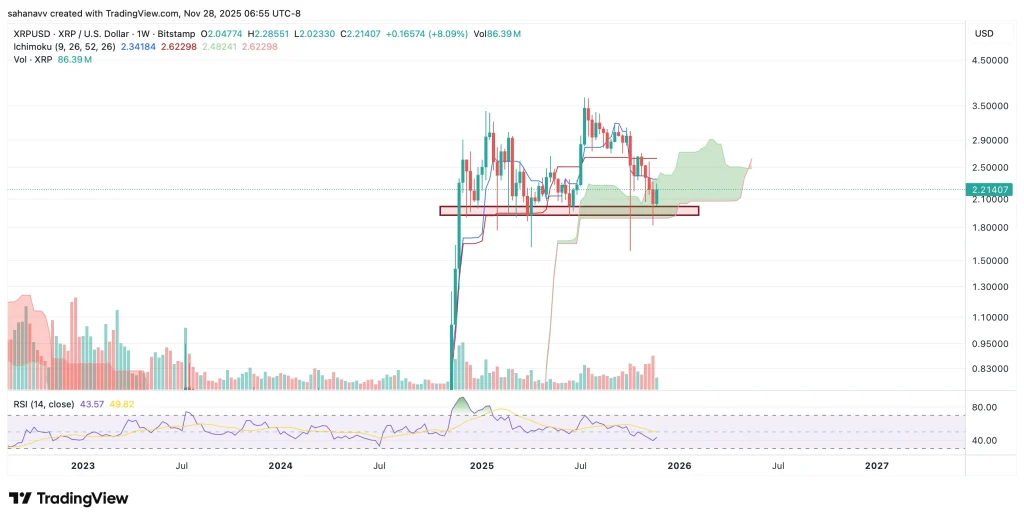Rebalancing the Crypto Portfolio: Navigating Bitcoin's Waning Dominance and the Altcoin Renaissance
- Bitcoin's market dominance fell to 59% in August 2025, marking a structural shift as institutional capital and whale activity migrate to altcoins like Ethereum. - Ethereum outperformed Bitcoin with a 54% price surge, driven by DeFi infrastructure and smart contract capabilities, while ETF inflows and $110M LayerZero acquisition signaled institutional validation. - Regulatory developments in Japan and Hong Kong accelerated altcoin adoption, with investors advised to diversify by use case and allocate 10-1
The cryptocurrency market is undergoing a seismic shift. For years, Bitcoin reigned as the undisputed king of digital assets, its dominance often exceeding 70% of the total market cap. However, as of August 2025, Bitcoin's share has dipped to 59%, signaling a pivotal moment in the evolution of crypto investing. This decline is not a temporary blip but a structural realignment driven by institutional innovation, regulatory clarity, and the maturation of alternative cryptocurrencies (altcoins). For investors, this presents both a challenge and an opportunity: how to rebalance portfolios to capitalize on the rise of high-potential altcoins while mitigating risks in a fragmented market.
The Erosion of Bitcoin's Hegemony
Bitcoin's dominance has long been cyclical, but recent trends suggest a more permanent shift. In 2025, Bitcoin's market share fell below 60% for the first time in four years, a stark contrast to its 2024 resurgence post-ETF approval. This decline is fueled by three key factors:
- Institutional Capital Migration: Bitcoin spot ETFs, once a pillar of its dominance, have seen $1.17 billion in net outflows since mid-August 2025. Meanwhile, Ethereum ETFs have attracted inflows, with BlackRock's Bitcoin ETF alone losing $615 million in a single week. This shift reflects growing institutional confidence in altcoins with utility-driven use cases.
- Whale Activity: A notable example is the $437 million conversion of Bitcoin to Ethereum by a Satoshi-era whale, underscoring a strategic pivot toward Ethereum's DeFi and smart contract ecosystems.
- Regulatory Tailwinds: Japan's Five-Year Startup Development Plan and Hong Kong's 2026 crypto banking regulations are creating fertile ground for altcoin adoption, particularly in Web3 and AI-driven projects.
The Altcoin Renaissance: Ethereum and Beyond
Ethereum has emerged as the most formidable challenger to Bitcoin's throne. Its price surged past $4,900 in August 2025, outperforming Bitcoin's 10% monthly gain with a 54% rally. This growth is underpinned by Ethereum's role as the backbone of decentralized finance (DeFi) and its ability to process complex smart contracts—a capability Bitcoin lacks.
The altcoin season index, a metric tracking capital flows into non-Bitcoin assets, has risen from 29 to 38 in 2025, indicating a broader reallocation of capital. Projects like LayerZero, which acquired Stargate for $110 million to enhance cross-chain interoperability, are redefining the crypto landscape. These developments highlight altcoins' potential to deliver both speculative returns and functional value.
Strategic Rebalancing: A Framework for Investors
For investors seeking to adapt to this new reality, rebalancing portfolios toward high-potential altcoins requires a disciplined approach:
- Diversify by Use Case: Prioritize altcoins with clear utility, such as Ethereum's DeFi infrastructure, Solana's high-speed transactions, or Cardano's academic research-driven development. Avoid speculative tokens without tangible applications.
- Monitor Institutional Sentiment: Track ETF inflows and whale activity to identify emerging trends. For instance, Ethereum's ETF inflows and the LayerZero acquisition signal institutional validation.
- Leverage Regulatory Developments: Countries like Japan and Hong Kong are creating regulatory frameworks that favor altcoin adoption. Investors should align with jurisdictions offering favorable policies.
- Risk Management: Allocate no more than 10-15% of a crypto portfolio to altcoins, with Bitcoin serving as a stabilizing anchor. Use stop-loss orders to mitigate volatility.
The Road Ahead
Bitcoin's waning dominance does not spell its demise but rather reflects the maturation of the crypto ecosystem. As altcoins gain traction, investors must adopt a nuanced strategy that balances Bitcoin's role as a store of value with the innovation-driven potential of alternatives. The key lies in identifying projects with robust fundamentals, institutional backing, and regulatory alignment—while remaining vigilant against the inherent volatility of the market.
In this new era, the winners will be those who recognize that Bitcoin is no longer the only star in the crypto sky. The altcoin renaissance is here, and the time to recalibrate is now.
Disclaimer: The content of this article solely reflects the author's opinion and does not represent the platform in any capacity. This article is not intended to serve as a reference for making investment decisions.
You may also like
No wonder Buffett finally bet on Google
Google holds the entire chain in its own hands. It does not rely on Nvidia and possesses efficient, low-cost computational sovereignty.

HYPE Price Prediction December 2025: Can Hyperliquid Absorb Its Largest Supply Shock?

XRP Price Stuck Below Key Resistance, While Hidden Bullish Structure Hints at a Move To $3

Bitcoin Price Prediction: Recovery Targets $92K–$101K as Market Stabilizes